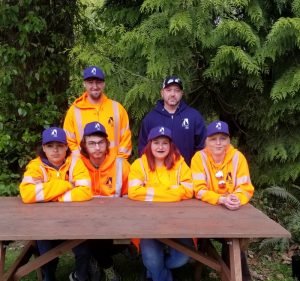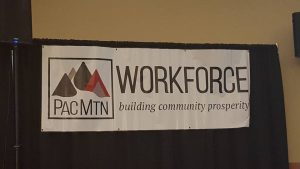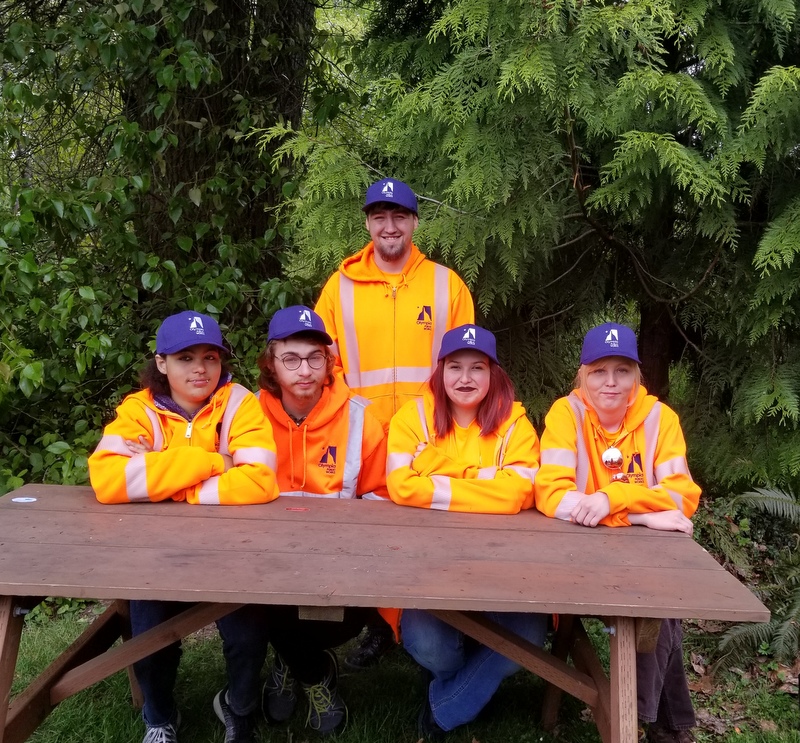If you walk through downtown Olympia, they’re hard to miss: homeless and/or unemployed youth wandering the streets on their own, in pairs, or small groups, in what has become a growing challenge for cities throughout the Northwest.
 The issue has been on Mayor Cheryl Selby’s mind for years. In 2018, she spoke with Pacific Mountain Workforce Development Council (PacMtn) Chief Executive Officer Cheryl Fambles about it. “I remember telling her, ‘It’s really bothering me that we’ve got all these kids downtown who seem like they’re working age and they seem able,’” says Selby. “‘Where is the opportunity for them?’”
The issue has been on Mayor Cheryl Selby’s mind for years. In 2018, she spoke with Pacific Mountain Workforce Development Council (PacMtn) Chief Executive Officer Cheryl Fambles about it. “I remember telling her, ‘It’s really bothering me that we’ve got all these kids downtown who seem like they’re working age and they seem able,’” says Selby. “‘Where is the opportunity for them?’”
Now that opportunity has arrived. Through a federal Department of Labor grant focused on providing services to address the opioid crisis, PacMtn is facilitating Prepping Employment Plans and Possibilities for Youth/Young Adults (PEPPY), a pilot program that connects homeless youth and those at risk of becoming homeless with job training and work-based learning opportunities through the City of Olympia.
The project began with career readiness training in late March with seven youth placed at the Parks and Recreation Department and Public Works Department in early April. City staff are excited, says Selby. “There’s a sense that they’re mentoring somebody that needs it. As city employees, they see these kids downtown, too. Here we have this great opportunity to make a difference.”

Elizabeth Wright is a member of the program’s first cohort with the Parks and Recreation Department. “What I really appreciate about PacMtn is the opportunity to get my foot in the door with the city,” she says. “I know that this position is temporary, but they have been very supportive of what I want to do as far as long-term career goals and helping me take the steps I need to get there.” Eventually Wright would like to open a non-profit to serve at-risk teens.
PacMtn oversees the overall pilot, with CHOICE Regional Health Network helping participants navigate health services and Family Education and Support Services doing outreach and providing case management. “It’s another example of how public/private/non-profit partnerships are so powerful and necessary,” says Selby. “No one agency, organization, or business can do it all by themselves. We have to be working together.”
Structurally, the project includes aspects of existing PacMtn programs. “It’s a hybrid model that pulls in a lot of different components that we’ve had success with in other areas,” explains Julie Baxter, Project Manager of the Opioid Use Reduction & Recovery Alliance at PacMtn. Those components include Uplift!, a career readiness training program, and work-based learning opportunities through local employers. Mentorship throughout the work experience, for both employee and employer, is key.
“One of the impacts we know of for young people is that if their parents have been addicted to opioids, they may have lost their jobs and been kicked out of their homes,” says Fambles. “That’s why they’re homeless. So let’s help them to create their own lives with these opportunities to work.”
Tristan “Wizard” Sinclair appreciated both the practical aspects of the training and the “soft skills” like communication and problem solving. “The class helped me figure out how to put a lot of my non-verifiable work experience on a resume in a cohesive way,” he says. “They had a lot of teambuilding exercises that were useful and also entertaining. It’s cool to be able to work with people to accomplish a task. This experience has definitely opened the door for a lot of possibilities that I’m hugely appreciative of.”
While the potential benefits for participating youth are clear, Thurston Chamber of Commerce Executive Director David Schaffert believes employers will also gain. “One challenge at full employment is how you think about developing a talent pipeline,” he says. “This could definitely be an opportunity for employers to develop their own workforce.”

Success will be measured by several metrics, some easier to track than others. Selby anticipates seeing youth unemployment numbers go down. “They’re at an all-time high,” she says. “To make a dent in those numbers, especially with a population that tends to be underserved and underemployed, that’s what I want to see.”
Ultimately, the goal is to get participants into unsubsidized jobs, according to Fambles. However, given the amount of time it takes to train them, provide work experience and then offer on-the-job training, it can be difficult to measure progress. “Will they find themselves able to hold down a job? Once that happens, can they progress in that job? Those are the kinds of metrics we’re going to look at,” she says.
Once the model is proven, Fambles hopes to see it expand to include other partners such as counties, other cities or school districts that can provide both a site and a mentor. “This is a call to action for other business and community-based organizations and governments,” she says. “Bring it to the table and let’s figure out how we can partner to do something with and for these young people.”
Learn more about PacMtn at their website.

















































